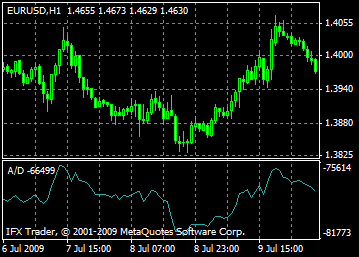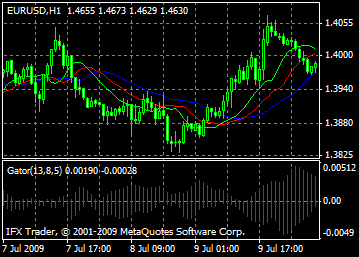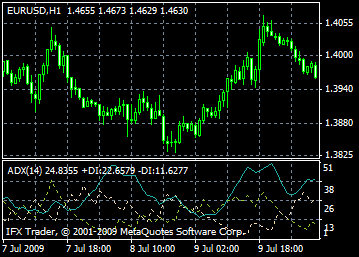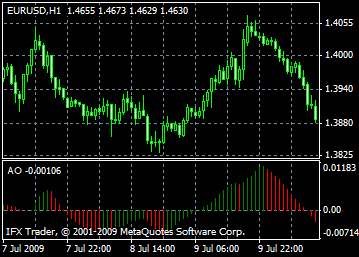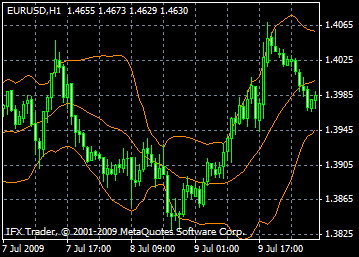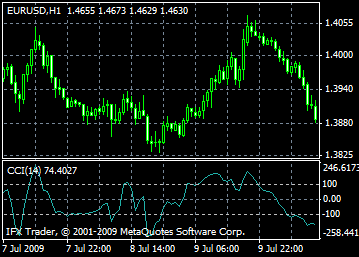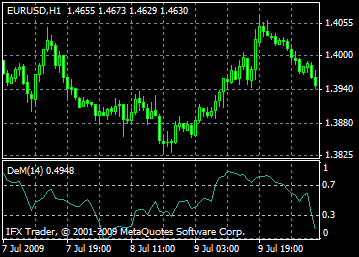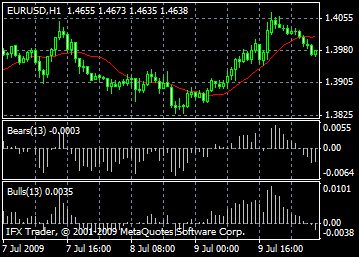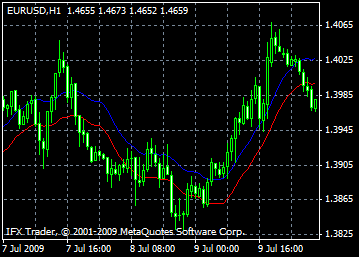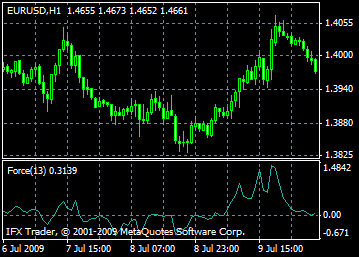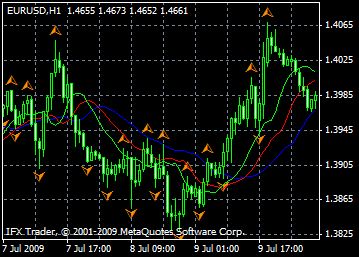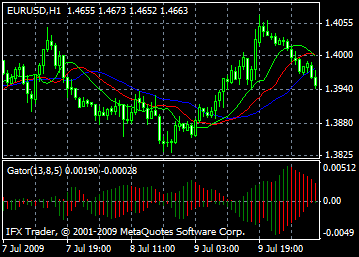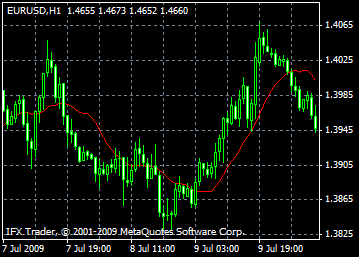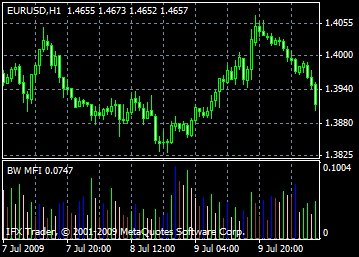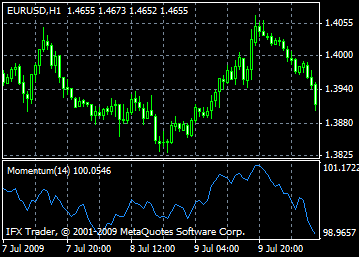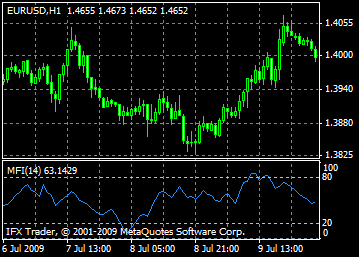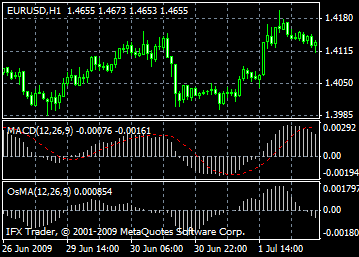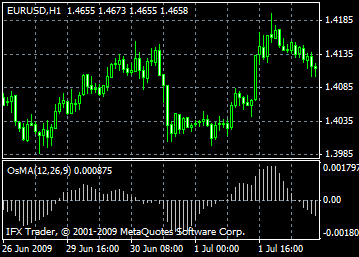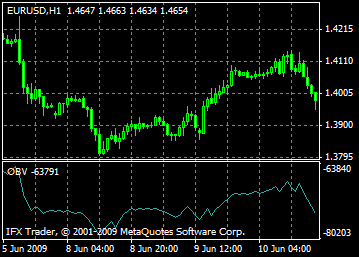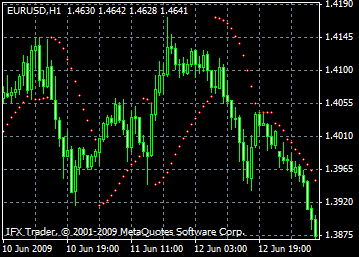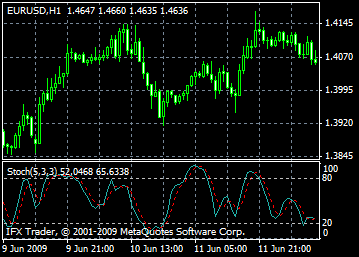Accelerator/Decelerator Oscillator - AC
One of the last elements which is possible to change is price. When the price changes, the market driving force starts modification, and prior this process beginning, the force precipitation must slow and touch the zero reading. After that, it begins to rise backwards until the price direction takes another course.
Acceleration or deceleration of driving force can be measured by means of the technical indicator Acceleration/Deceleration, AC. The indicator changes its trend with the driving force adjustment, and the last one changes its direction with the price fluctuations. AC turns out to be a change signal, that gives a particular advantage.
The accelerating driving force balance is at zero level. Being above zero Oscillator Acceleration Deceleration, AC allows to move upwards more intensively (and conversely, when below zero). During the zero reading transit doesn't give any attention signal. For decision making and market monitoring it is necessary just to watch over the color changing. Worth keeping in mind that it is better not to buy with the help of AC, if the current column is green, and sell if it is red.
On buying only two colored green columns are required, and conversely, for selling – two colored red columns while accessing the market in the driving force direction. Opening a position if the driving force is on the opposite side, confirmation is required, that means additional column. That is to say, the indicator must show three red columns above zero, amid this, for the long position – three green columns below zero.
Price - is the last changing element. Before the price changes, the market driving force moves, and prior to this, the driving force acceleration must slow the pace and reach zero level. Thereafter, it starts accelerating in the opposite direction until the price begins fluctuating.
The technical indicator Acceleration/Deceleration, AC measures acceleration and deceleration of the current driving force. This indicator changes its trend prior to the driving force correction, and in its turn, the driving force changes its direction before the price moves. Comprehension of that AC is advancing attention signal gives obvious advantages. Zero line - practically it is a point where the driving force is balanced with acceleration. If Acceleration Deceleration, AC is above zero then, usually it is easier to continue the upward movement (and vice versa - when below zero). As against wesome scillator, the zero line cross-cut doesn't come as a sign. The only thing to do for monitoring the market and taking measures - is to keep an eye on color deviation. To avoid hard thinking, just remember: it is better not to buy using AC when the current column is red colored and not to sell when it is green. If you enter the market in the driving force direction (Acceleration/Deceleration indicator is above zero while making purchase, and below zero while selling), then for buying two green columns are needed (two red columns - to sell). If the driving force is against the position opened (the indicator is below zero on buying, above zero on selling), confirmation is required, so you need one more column. In this case, it is necessary the indicator to show three red columns above the zero line for the short position, and three green columns below zero for the long one.
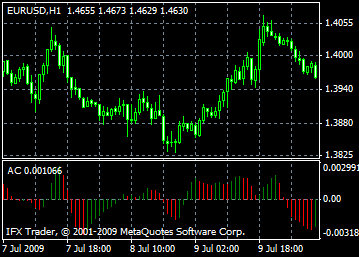
Calculation
ADX = SUM[(+DI-(-DI))/(+DI+(-DI)), N]/N
Where:
N - the number of periods used in the calculation.
 RSS Feed
RSS Feed Twitter
Twitter
 Wednesday, March 10, 2010
Wednesday, March 10, 2010
 pipsrunner
pipsrunner
